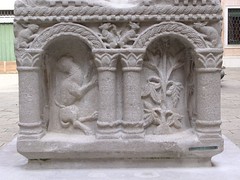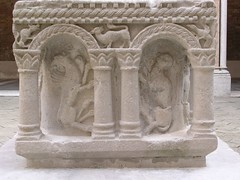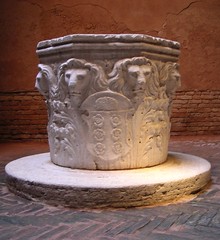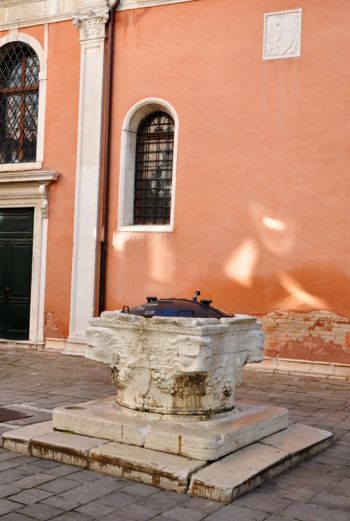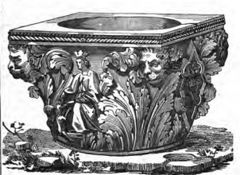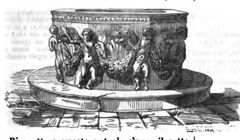Wellheads
Da Venicewiki, il wiki di Venezia
The well Venetian was a plant quite complex and expensive, a real 'underground cistern of drinking water' .
The water was the rain that was filtered from the mass of sand placed in an impermeable basin, made so artificially by a layer of clay, the so-called "Cree", which extended to the entire surface of a field or of a court; was then collected through the barrel central masonry formed by special bricks said just Pozzali.
The Vera, it is said that with architectural term well-head, over the centuries was buying art forms ever more elaborate and complex. Modest or lavish, raised by one or more steps to the road surface (sometimes with trays at the base for the thirst of dogs and pigeons), having the character of small monuments in cubic form, circular, polygonal; have the form of capital, will also enrich Supports marble or metal on which to apply the pulley to let you scroll through the rope of the bucket. Variatissima and imaginative decoration in relief: trees, garlands of fruit and flowers, curled foliage, cherubs, angels reggiscudo, peacocks facing, lion heads, allegorical motifs, inscriptions moral. The private well bears often the weapon of patrician family who commissioned it (these crests there appears to be the first example of the thirteenth century); the public wells bearing the emblem of the magistrate building, but also the name (or names if more one), who ordered its construction, or the effigy of Justice, algae, tridents, dolphins and similar reasons made symbol of the republic ruler of the seas.
Well Venetian is a real system of public utility and, of course, basic necessities.

As seen rainwater is collected giving appropriate gradients to the paving of the field; sometimes, however, better to obtain the impluvium or limit the depth of the excavation, but also to prevent the ingress of salt water as a result of high tides, the plane of the field is raised in part, as for the two wells Campo Sant'Angelo, or at all, as for the well in Piazzetta dei Leoncini or in front of the Chiesa di San Trovaso.
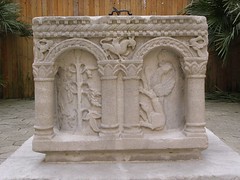
On the other hand, the supply of drinking water for a city like Venice, isolated and exposed amid the lagoons, it was always a very important issue, both for the nutritional well-being for both the strategic and political aspect.
This explains why the Government of the Republic has always in every way encouraged the construction and maintenance of wells.

As the inner courtyards of palaces and buildings also not exactly luxurious, they were often provided by a private well, it was the title of merit for the wealthy citizen or for the family with economic possibilities, offer a well-to-City. Coats of arms and inscriptions carved on the memorial are often true of wells, in a sign of gratitude and remembrance of the plant run public. The private wealth of the Venetians was too well how to be placed at the service of the community, not for paternalistic donation to the poorer classes, but conscious and calculated practical necessity.
The Venetian wells are currently around 600 and they are not in use. According to statistics of the Office municipal engineer, drawn up on the December, 1858, at that time there were, however, only in the Venice, 6,046 private wells and 180 public, over 556 already buried. Remain visible today only part of wellheads, ie the outer ring, almost always in Istria stone, overlooking the "barrel", and the manhole covers which were used to feed it.


